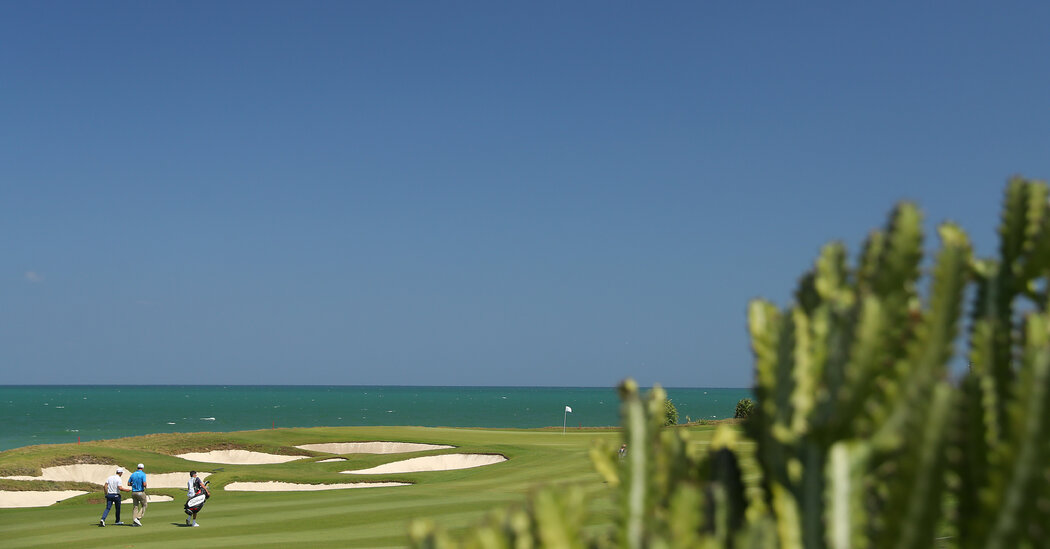This article is part of our latest special report on International Golf Homes.
MUSCAT, Oman — On a once-barren strip of desert along the Gulf of Oman, the Al Mouj development has slowly emerged over the past 17 years, part of this country’s transformation over the past 50-odd years, from an off-the-grid trading post, with only a few miles of paved roads, to an international destination that often feels like what nearby Abu Dhabi and Dubai were a decade ago.
And the newest phase of Al Mouj, the St. Regis hotel and residences — scheduled to open this fall with 269 guest rooms and 170 residences — is currently rising against the backdrop of the Al Hajar mountains that line Muscat to the southwest. Its ocean-inspired facade of curvilinear white shapes, with views of either the Gulf of Oman or of the 7,342-yard-long golf course, was taking shape during a recent tour highlighting the development of the property alongside the Greg Norman-designed golf course, which opened in 2012. The course has been available to all residents, with discounted rates, since Al Mouj’s creation, but the hotel and residences (prices start at 285,000 Omani rial, or about $737,982) are the first to straddle the golf course and the Gulf of Oman.
Standing on the 18-hole golf course evokes a sense of subdued Middle Eastern charm, removed from the skyscrapers of those neighbors in the United Arab Emirates on the other side of the imposing mountain range. Oman’s restrained modernization feels rooted in hospitality — and easier access to retirement visas — that seems to draw tourists, retirees and, yes, golfers looking for a quieter experience in the booming region.
Oman is home to an ancient culture of mountain farmers and seafaring traders; the empire once stretched as far south as the archipelago of Zanzibar, off the coast of Tanzania, and as far north as present-day Iran and coastal Pakistan. (The nation was a stopping point in the East African slave trade during the 17th to 19th centuries. It was under Portuguese rule in the early 16th century, and some of the architectural influences are still seen throughout the country, including in Al Mouj.)
Begun in 2006 as something of a mini-city, a mixed-use development made up of townhouses (current prices start around $350,000), restaurants, hotels and businesses, Al Mouj has now emerged as a palm tree-lined residential area for more than 8,000 people, with its own mosque and nursery, new and planned luxury hotels, dozens of…
Click Here to Read the Full Original Article at NYT > Travel…
